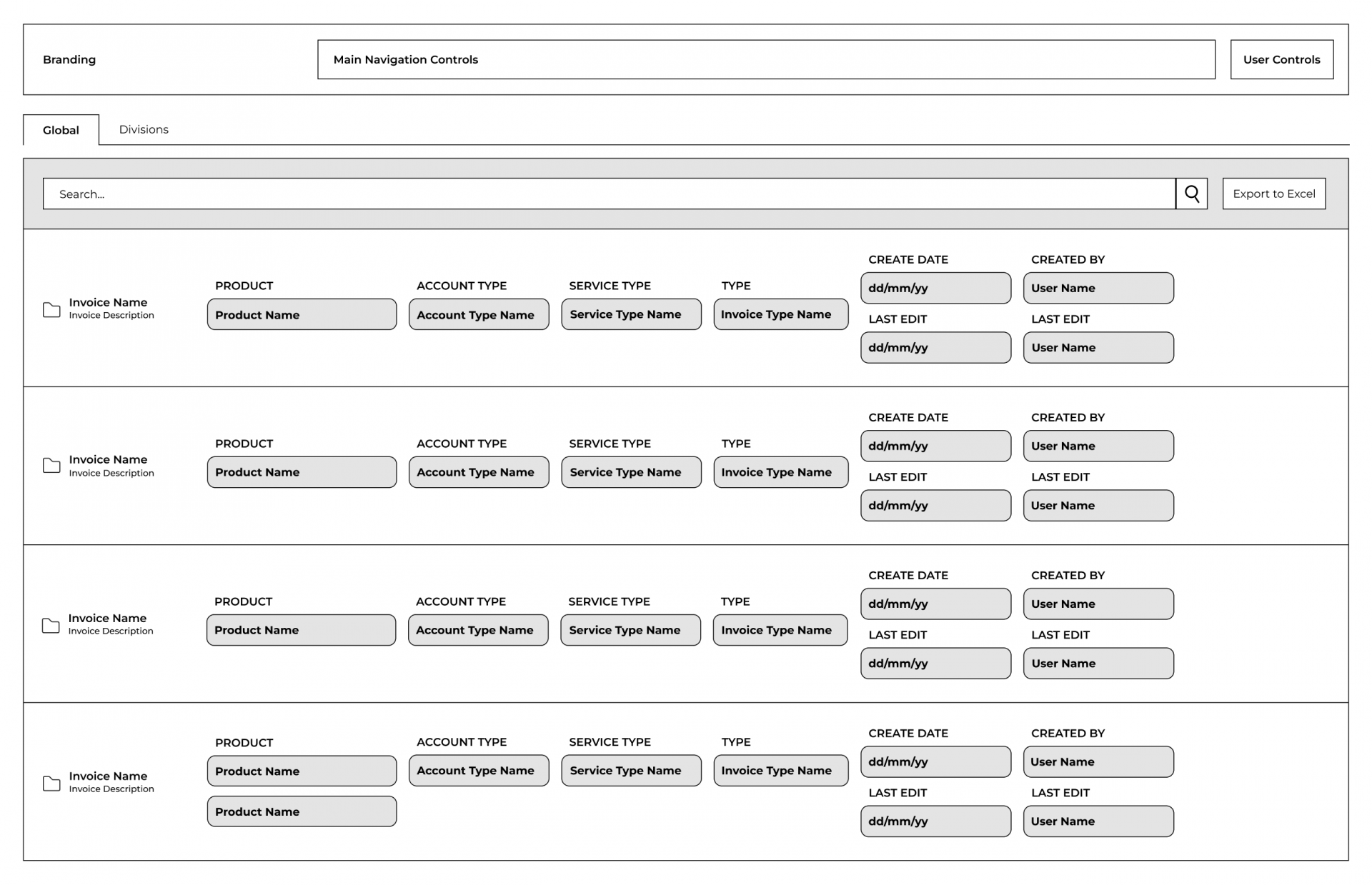Efficient invoicing is vital for the health and growth of any business. Invoices are critical documents that ensure a steady flow of revenue and help maintain financial accuracy. While automated invoicing systems offer speed and error reduction, there are scenarios where manual systems provide superior flexibility and customization.
Many medium-sized to large businesses encounter unique challenges that make automated invoicing systems less viable. These challenges often involve the need for frequent customization, scalability according to fluctuating needs, and maintaining control over invoicing details.
This case study explores how we developed a custom manual invoicing system to meet the specific business needs of our client in the Telco industry, providing an alternative to automated solutions that may lack the required adaptability.
The Challenge
Our client required a robust solution that could handle variable invoicing requirements while maintaining the potential for manual oversight and customization. They faced several specific challenges with their existing automated invoicing system:
- Limited Flexibility: The automated system could not handle deviations from standard invoice templates without incurring significant costs and time delays.
- Scalability Issues: The system was inefficient at scaling with varying invoicing volumes, leading to operational bottlenecks.
- Customization Needs: The frequent need to customize invoices for specific transactions was not supported, resulting in cumbersome manual adjustments.
The Solution: Custom Manual Invoicing System

To address these challenges, our team developed a custom manual invoicing system with the following features:
- Manual Invoice Creation and Exporting: Users can create, copy, export, and import invoices and credits, providing full control over the invoicing process.
- Dynamic Invoice Customization: The system allows selection of customers, time periods, products, and currencies. Pre-populated values based on customer preferences streamline the process.

- Item Management: Users can add, modify, and remove items during invoice creation, with support for splitting item values for detailed financial reporting.

- Invoice Status Tracking and Updates: A robust tracking system enables users to change invoice statuses, add remarks, and set up automatic recurring invoices.
- Email Notifications: Automated emails are sent for relevant changes in the invoicing process, ensuring all stakeholders remain informed.
- GL Accounts and Profit Centers Management: A dedicated module allows for easy management of GL accounts and profit centers, facilitating financial adjustments according to business needs.

Implementation
The implementation was structured into three phases over six months to ensure a smooth transition:
- Phase 1 – Initial Setup and Configuration: The manual invoicing system was set up and configured to meet the client’s specific requirements.
- Phase 2 – Training and Initial Testing: Key users were trained, and initial live testing was conducted with a limited set of invoices to gather feedback and make necessary adjustments.
- Phase 3 – Full Deployment and Integration: The system was fully deployed and integrated with existing financial systems, ensuring a seamless transition to the new process.
Project Results
Post-implementation, the client experienced significant improvements:
- Increased Flexibility: Customization of invoices on-the-fly was possible without additional costs, enhancing the client’s ability to meet specific invoicing needs.
- Improved Efficiency: Despite the manual nature of the system, the intuitive design and automation of repetitive tasks reduced the time spent on invoicing.
- Enhanced Control: The client gained greater oversight of financial transactions and invoice management, leading to improved compliance and accuracy.
Key Takeaways
- Custom manual invoicing systems can offer significant benefits over automated solutions, particularly in terms of flexibility and control.
- A thorough understanding of client needs is essential in designing an effective invoicing solution.
- Phased implementation ensures minimal disruption and allows for adjustments based on initial feedback, ensuring a smoother transition and adoption process.
Conclusion
The custom manual invoicing system effectively addressed the client’s unique needs, demonstrating the value of manual solutions in certain business contexts. This case study underscores that while automation is widely adopted, manual systems still hold significant benefits in terms of flexibility and control.
If you require a manual invoicing system or need custom software development, please contact us to discuss how we can assist you!
